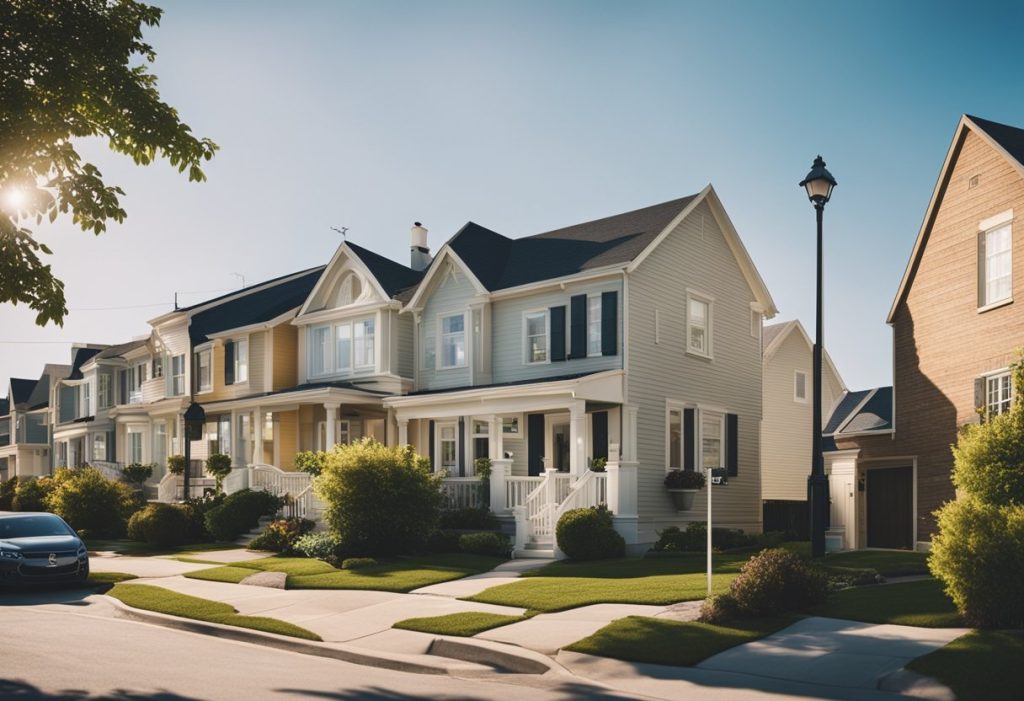Best States for House Flipping: Investor’s Guide 2025

House flipping continues to attract real estate investors seeking profitable opportunities across the United States. With varying market conditions, renovation costs, and potential returns, choosing the right location becomes crucial for success in this competitive industry.
Louisiana boasts a remarkable 55.6% return on investment for house flipping, while Pennsylvania investors enjoy the highest ROI at 77.3%. Market conditions vary significantly by region, with factors like renovation costs, local demand, and property values playing crucial roles in determining profitability.
States like Maine and West Virginia offer abundant opportunities for investors seeking fixer-upper properties, while cities like Pittsburgh and Buffalo emerge as promising markets for house flipping ventures. Your success depends on carefully analyzing these market dynamics and choosing locations that align with your investment strategy.
Key Takeaways
- New England and Mid-Atlantic states dominate the house flipping market with quick sales and reasonable renovation costs
- Southern states offer exceptional ROI potential with Louisiana and Pennsylvania leading in returns
- Fast-growing markets in major cities provide diverse opportunities for both novice and experienced investors
The House Flipping Landscape In 2025
Fayetteville leads the pack as a prime location for real estate investors, with its steady university-driven demand creating reliable opportunities for home flipping.
Your success in house flipping depends heavily on location selection. Five states stand out for flipping potential: Louisiana, Michigan, Alabama, Delaware, and Ohio, offering attractive price points and strong market conditions.
Major urban centers continue to provide solid returns. New York City, Houston, and emerging markets like Clarksdale, Mississippi present profitable opportunities for house flippers in 2025.
Tech hubs and historic areas deserve your attention. Boston’s historic properties and San Jose’s tech-driven growth create unique opportunities for strategic buyers.
Market indicators for 2025:
- Rising demand in university towns
- Strong returns in tech-focused cities
- Growing potential in mid-sized markets
- Increased interest in historic renovations
You’ll find the most success by focusing on markets with:
- Stable employment rates
- Growing population
- Below-market property availability
- Strong rental demand
What Makes A State Ideal For House Flipping?
Several key factors determine whether a state offers prime opportunities for house flipping success. Your potential profits depend heavily on the local real estate market conditions and economic indicators.
The most profitable states show a pattern of high ROI percentages up to 77.3% due to the gap between purchase prices and after-repair values. You’ll want to focus on areas with strong housing demand and stable property values.
Remodeling costs play a crucial role in your profit calculations. States with lower labor and material costs allow you to maximize your renovation budget. Look for areas where you can find skilled contractors at competitive rates.
Market velocity matters significantly. States with higher numbers of fixer-upper properties like Maine and West Virginia offer more potential inventory for flipping projects. This gives you more options to choose profitable properties.
Your target state should have consistent home sales activity. Quick turnover times reduce holding costs and increase your annual return potential. The best flipping states maintain steady buyer demand throughout the year.
Local regulations and permit requirements affect your timeline and budget. Choose states with straightforward building codes and reasonable processing times for renovation permits. This helps you complete projects efficiently and maintain your projected profit margins.
Population growth and employment rates influence long-term market stability. States with expanding job markets tend to have stronger housing demand, supporting both property values and sales rates.
Vermont: The Unexpected House Flipping Champion

Vermont stands out as a prime location for house flipping, earning the highest House Flipping Score of 99 among all states in 2025. Properties in the Green Mountain State spend just 32 days on the market before finding buyers.
You’ll find an exceptionally active real estate market here, with 6,230 houses sold per 100,000 residents. This high transaction volume creates numerous opportunities for property investors.
The state’s real estate market offers a compelling mix of advantages for house flippers. Property values remain stable, which helps protect your investment while you complete renovations.
Key Market Advantages:
- Quick property turnover (32-day average)
- High transaction volume
- Stable property values
- Strong buyer demand
For best results in the Vermont market, focus on strategic renovations that appeal to local buyers. The state’s emphasis on historic preservation and energy efficiency means these improvements often deliver strong returns.
Consider targeting properties in popular areas like Burlington, Stowe, or Montpelier where demand remains consistently high. These markets offer the best combination of quick sales and profitable returns.
New England Dominance: Why Maine And New Hampshire Excel

Maine leads the nation in fixer-upper opportunities, making it an ideal market for property investors seeking value-add potential.
Maine’s remarkably low remodeling costs of $27,486 create excellent profit margins for flippers, while its quick sales cycle keeps your capital working efficiently.
New Hampshire presents a compelling investment case with its blend of advantages. You’ll benefit from modest renovation expenses combined with impressive average sale prices of $462,492.
Both states offer unique geographical benefits for investors:
- Close proximity to major metropolitan areas
- Strong seasonal rental potential
- Growing remote worker population
- Historic property inventory
Property turnover rates in these markets are particularly attractive. Your renovated properties can expect to sell within 30-35 days on average, significantly reducing holding costs.
Maine and New Hampshire’s success in house flipping stems from their perfect storm of market conditions:
- Low entry costs: Affordable purchase prices
- Manageable renovations: Below-average contractor rates
- Strong demand: Steady stream of buyers
- Premium resale values: High price-per-square-foot metrics
Mid-Atlantic Opportunities: Delaware, Rhode Island, And Connecticut

Delaware stands out as a prime location for house flipping, with investors nearly doubling their investments through an impressive 96.1% return on investment.
Rhode Island attracts investors with its rapid market movement. Properties typically sell within 28 days, giving you quick turnaround potential on your investments. The state also benefits from relatively low renovation costs.
Connecticut offers you exceptional speed-to-market advantages. The state boasts some of the fastest property turnover rates in the nation at just 27 days average time on market.
When investing in these states, focus on these key strategies:
- Target properties near major employment centers
- Look for homes with outdated but structurally sound features
- Prioritize properties in established neighborhoods
Delaware’s market strength comes from its steady population growth, making it particularly attractive for long-term investment potential.
To maximize your success in these markets:
- Keep renovation budgets tight and focused
- Move quickly when properties become available
- Build relationships with local contractors
- Research neighborhood-specific price trends
High-Value Markets: Hawaii And Massachusetts
Hawaii stands out as a premier destination for experienced house flippers with substantial capital. The state boasts the nation’s highest average sale prices at nearly $830,000, making it ideal for luxury property transformations.
When flipping houses in Massachusetts, you’ll find strong market fundamentals with properties typically selling within 36 days. The state’s robust average property values of $605,614 create opportunities for significant returns.
Your target buyers in these markets are often high-income professionals, tech industry employees, and luxury home seekers. Focus on premium finishes and modern amenities to meet their expectations.
Consider these key success factors for high-value markets:
- Premium kitchen and bathroom upgrades
- Smart home technology integration
- Energy-efficient improvements
- High-end appliance packages
Massachusetts remains promising for flippers, particularly in urban areas near Boston and growing suburban communities. The state’s strong education and healthcare sectors support consistent buyer demand.
The higher entry costs in these markets require careful financial planning. Your renovation budgets should account for premium materials and skilled labor while maintaining profit margins.
Southern Growth: Virginia And North Carolina
Virginia presents compelling opportunities for house flipping with profits averaging $91,793 and remarkable returns on investment approaching 100%.
The renovation landscape in Virginia requires a moderate investment of $39,215 for home improvements. You can expect properties to sell for about $383,000 in the current market.
North Carolina’s housing market shows exceptional vigor, particularly in specific regions. Spartanburg’s flip rate of 13.3% demonstrates the robust flipping activity in the Carolinas.
When comparing these southern states to other markets like Arizona, you’ll find distinct advantages. Virginia earned a flipping potential score of 76, while North Carolina secured a solid 74.
Both states benefit from steady population growth and employment opportunities, creating consistent demand for renovated properties. Your renovation investments can target both young professionals and growing families seeking updated homes.
The accessibility of materials and labor in these states helps maintain reasonable renovation costs. You’ll find competitive pricing for contractors and supplies compared to northeastern markets.
Investment Strategies For Top House Flipping States
Louisiana boasts an ROI at 55.6% for house flips, making it an attractive market for investors. You’ll need $150,000-200,000 in initial capital for property acquisition and renovations in this region.
In high-potential markets like Delaware and Pennsylvania, plan for a 4-6 month flip timeline from purchase to sale. This includes 2-3 months for renovations and 1-2 months for listing and closing.
Focus your renovation budget on these high-impact improvements:
- Kitchen updates (cabinets, countertops)
- Bathroom modernization
- Fresh paint throughout
- Upgraded flooring
- Curb appeal enhancements
Michigan and Alabama markets typically require lower initial investment, ranging from $80,000-120,000. This makes them ideal for new investors or those with limited capital.
Your success in states with abundant fixer-uppers like Maine and West Virginia depends on thorough property inspection. Budget an extra 15-20% for unexpected repairs and structural issues common in these markets.
Reserve 25% of your total budget for critical repairs that buyers and appraisers scrutinize:
- Foundation issues
- Roof repairs
- HVAC systems
- Electrical updates
- Plumbing improvements
Frequently Asked Questions

House flipping success depends heavily on market conditions, location selection, and strategic property acquisition in high-potential areas across the United States. Experienced flippers who choose optimal locations often achieve returns between 20-40% on their investments.
What factors should be considered when choosing a state to flip houses?
Property values, market growth trends, and local economic indicators play crucial roles in state selection. Louisiana and Michigan rank among the top states for house flipping due to their favorable price-to-rent ratios and renovation costs.
Local real estate taxes, building permit requirements, and construction costs vary significantly between states. You should analyze these factors alongside demographic data and employment rates.
The availability of reliable contractors and speed of permit processing can significantly impact your project timeline and profitability.
Which cities in the US are currently most favorable for house flipping?
Cleveland, Chicago, and Philadelphia offer strong opportunities for house flipping due to their stable housing markets and reasonable property prices.
These cities feature numerous neighborhoods with aging housing stock prime for renovation. Their strong rental markets provide excellent backup exit strategies if immediate sales prove challenging.
How has the house flipping market changed in recent years?
Competition has increased as more investors enter the market, particularly in metropolitan areas. Digital tools and virtual property tours have accelerated the buying process.
Property acquisition costs have risen in most markets, pushing flippers to explore secondary cities and suburban areas.
What are the typical profit margins for house flipping in various states?
Profit margins typically range from 15% to 30% in competitive markets like New Jersey and Pennsylvania. Rural areas often offer higher potential returns but may require longer selling periods.
Your actual profits will depend on purchase price, renovation costs, and local market conditions.
How can one leverage online real estate platforms to find properties for flipping?
Multiple listing services (MLS) and real estate websites help identify potential properties based on specific criteria like price, condition, and location.
Virtual tours and digital documentation streamline your initial property assessment process. You can also set up automated alerts for properties matching your investment criteria.
What is the average annual income of a house flipper in the US?
Full-time house flippers typically earn between $75,000 to $150,000 annually. Your income potential varies based on project volume, market selection, and renovation expertise.
The number of properties you can flip simultaneously and your ability to manage renovation costs directly impact your annual earnings.
Want to know if that deal is actually worth pursuing?
Stop relying on outdated spreadsheets – analyze your next real estate deal like a pro with DealCheck.
Enter the code BESTDEAL at check out and receive a 20% Off Discount!
Start your free analysis today!

Master the art of real estate investing with The Real Estate Property Management Guide: Premium Edition – your comprehensive roadmap to successful property management.
Whether you’re a novice investor or seasoned professional, this guide covers everything from selecting the right investment properties to tenant management and property marketing.
The author, Jeff Rohde writing as Jeffrey Roark, is a professional with over 25 years of real estate experience. This Premium Edition includes the valuable bonus book Investment Real Estate Analysis: A Case Study to help you identify hidden opportunities and evaluate properties like a professional.
Learn practical, actionable strategies for both residential and commercial properties, from single-family homes to office buildings and shopping centers.
Don’t just buy property – learn how to manage it successfully and maximize your investment potential.
Grab your copy now from your favorite bookseller:
- Amazon (Basic Edition, does not include Investment Real Estate Analysis: A Case Study)
- Books2Read for Apple, Barnes & Noble, Kobo, Scribed, and 8 more sellers with both eBook and paperback options available ((Premium Edition, includes Investment Real Estate Analysis: A Case Study)
- Payhip as a downloadable PDF (Premium Edition)
This blog post was created by J. Scott Digital content creation services.